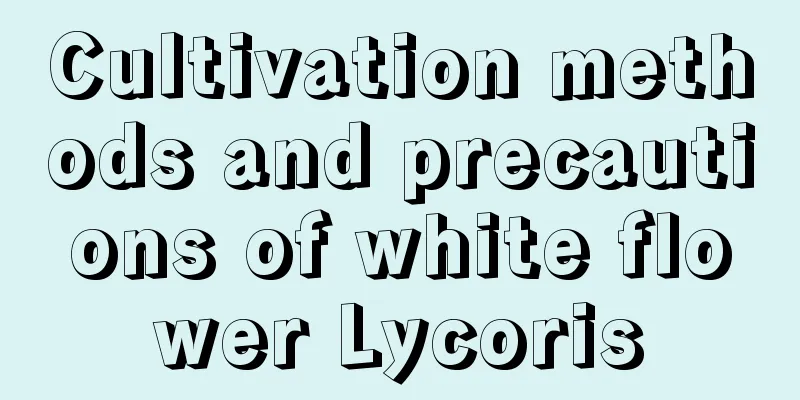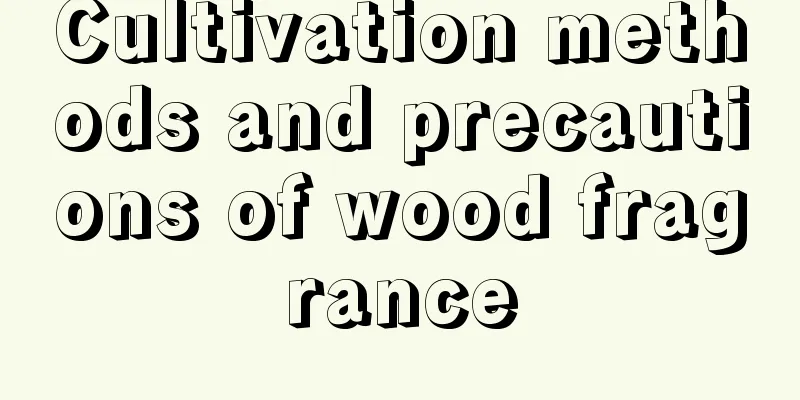Cultivation methods and precautions of white flower Lycoris

1. Maintenance methods1. Temperature: It prefers a cooler environment, specifically, it is more suitable to keep it between 15 and 20 degrees. Wild white amaryllis also grows in cool places. It is a plant that is very intolerant of high temperatures, so certain cooling measures need to be taken in summer. However, its cold resistance is still good. 2. Light: It has strong adaptability to sunlight. It prefers partial shade, but it is also quite resistant to direct sunlight. Therefore, being exposed to strong direct light for a short period of time will not cause any harm. However, overall it grows better in semi-shaded areas, so just provide diffuse light. 3. Watering: It has a relatively high adaptability to water. It likes moisture but is also drought tolerant. But during the growing and flowering periods, try to keep the substrate moist. 4. Fertilization: It does not require much fertilizer and does not have very high requirements for nutrients in the soil. Generally no fertilizer is needed. 2. Breeding techniques1. Reproduction: Seeding propagation can be adopted. However, it should be noted that if this method is used, it will take five to six years from sowing to flowering. After collecting the seeds, they need to be sown immediately. The sowing site needs to be selected in advance, and the main consideration is whether it has good air permeability. After sowing, water thoroughly and block out strong light. 2. Repotting: It can also be grown in potted plants, and at this time you need to pay attention to the issue of repotting. However, since it does not have particularly high requirements for soil quality, the interval can be longer, and it is sufficient to replace it every three or four years. When choosing soil, the requirements are not too many. The main consideration is air permeability, and nutrients can also be considered a little. 3. Problem diagnosis and treatment1. Disease: A common type is "soft rot", which can cause the plant to turn brown, and in severe cases it can cause its death. It can be controlled by spraying with benlate. 2. Pests: There are many types, including "white grubs", "amycotina armyworms", "spodoptera litura moth" and so on. The part that is most seriously damaged is the leaves. You can use some pesticides to spray and cut off the severely damaged leaves in time. IV. Other issues1. Flower language: It has many flower languages, including "independence", "passion", "goodbye" and so on. 2. Toxicity: It is poisonous, especially the seeds. |
>>: Breeding methods and precautions of silver longevity
Recommend
How to propagate alum root and what to pay attention to
Alum root propagation method The main ways of pro...
What causes spider plant leaves to curl?
1. Lack of water Reason: It may be due to lack of...
How to care for camellia after it has flower buds
1. Increase lighting Camellias need plenty of sun...
How to grow chrysanthemums in winter
1. South Because the temperature in the south is ...
Can Bolu be propagated by leaf cuttings? Side bud propagation method
Can Bolu be grown by leaf cutting? Pollen can be ...
Causes and treatments for yellow leaves of purple-leaf plum
1. Insufficient light Reason: Purple-leaf plum li...
Orange cultivation methods and precautions
1. Maintenance methods 1. Substrate selection: Th...
Jasmine grafting method
Jasmine can be grafted. The grafting period is us...
Causes and treatments for yellowing leaves of white palm
1. Too much light 1. Reason: White calla lilies l...
Hydroponic spiderwort protects Virgo
Hydroponic spiderwort Needless to say, hydroponic...
When is the best time to prune the photinia
Pruning effect Pruning is of great significance f...
How to quickly thicken bonsai branches (how to make the branches and trunks of potted plants thicker)
The trunks of many plants and flowers are too thi...
Kapok anti-cancer diet recipe recommended
Kapok Five Flavor Drink raw material 15 grams of ...
The difference between Polygonatum multiflorum and Polygonatum sibiricum
1. Differences in stems The rhizome of Polygonatu...
How to grow juniper
1. Lighting The growth of juniper requires suffic...









